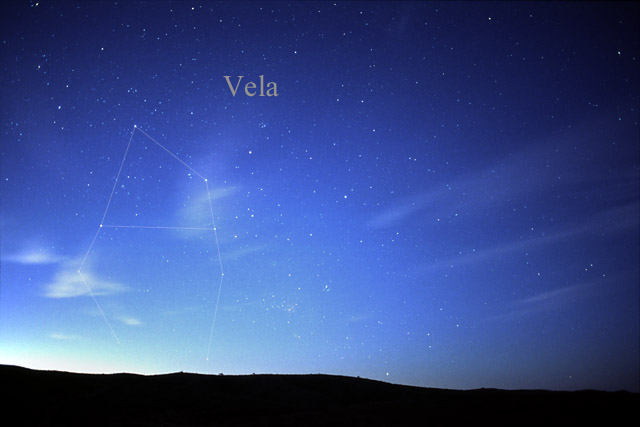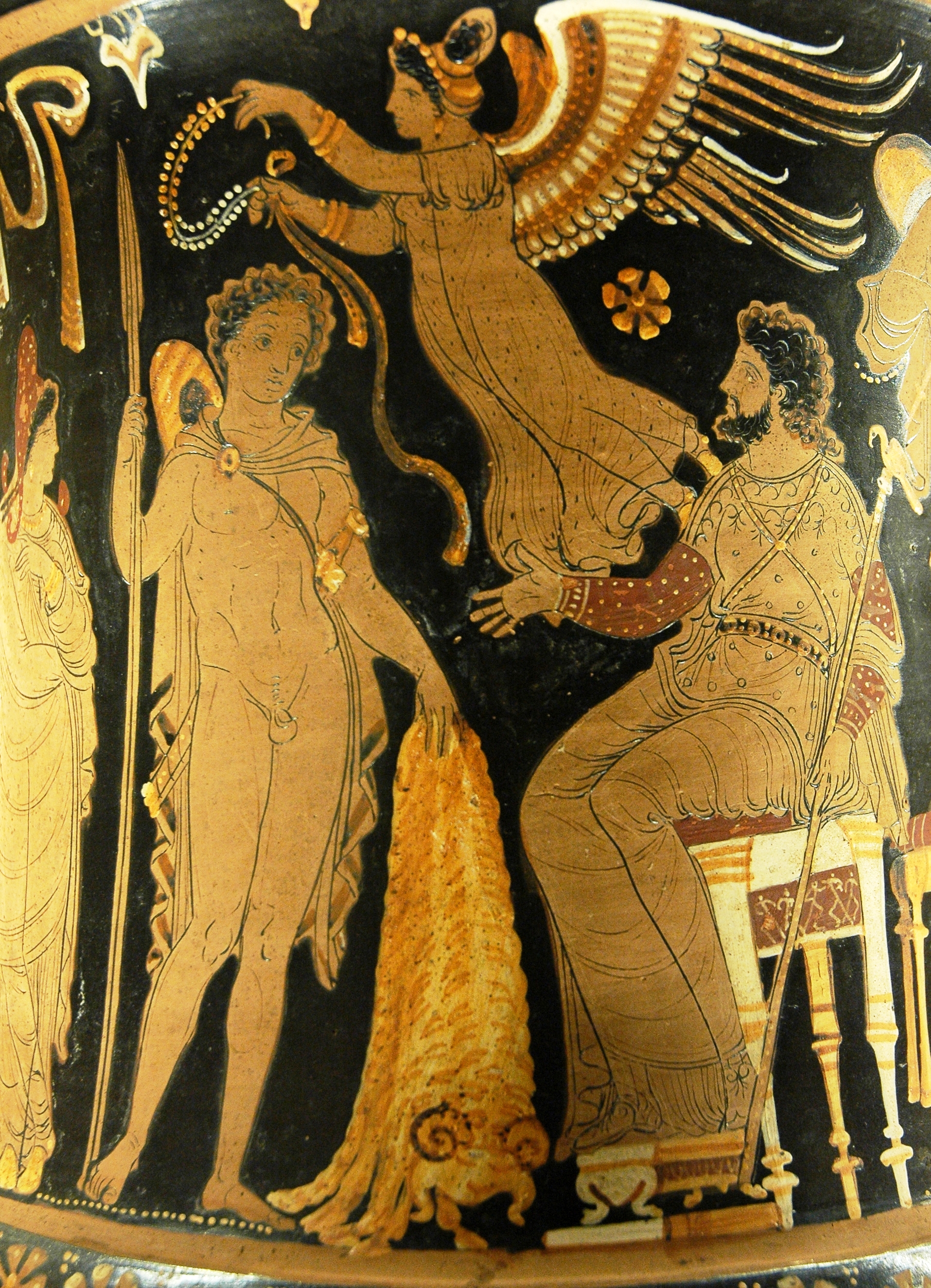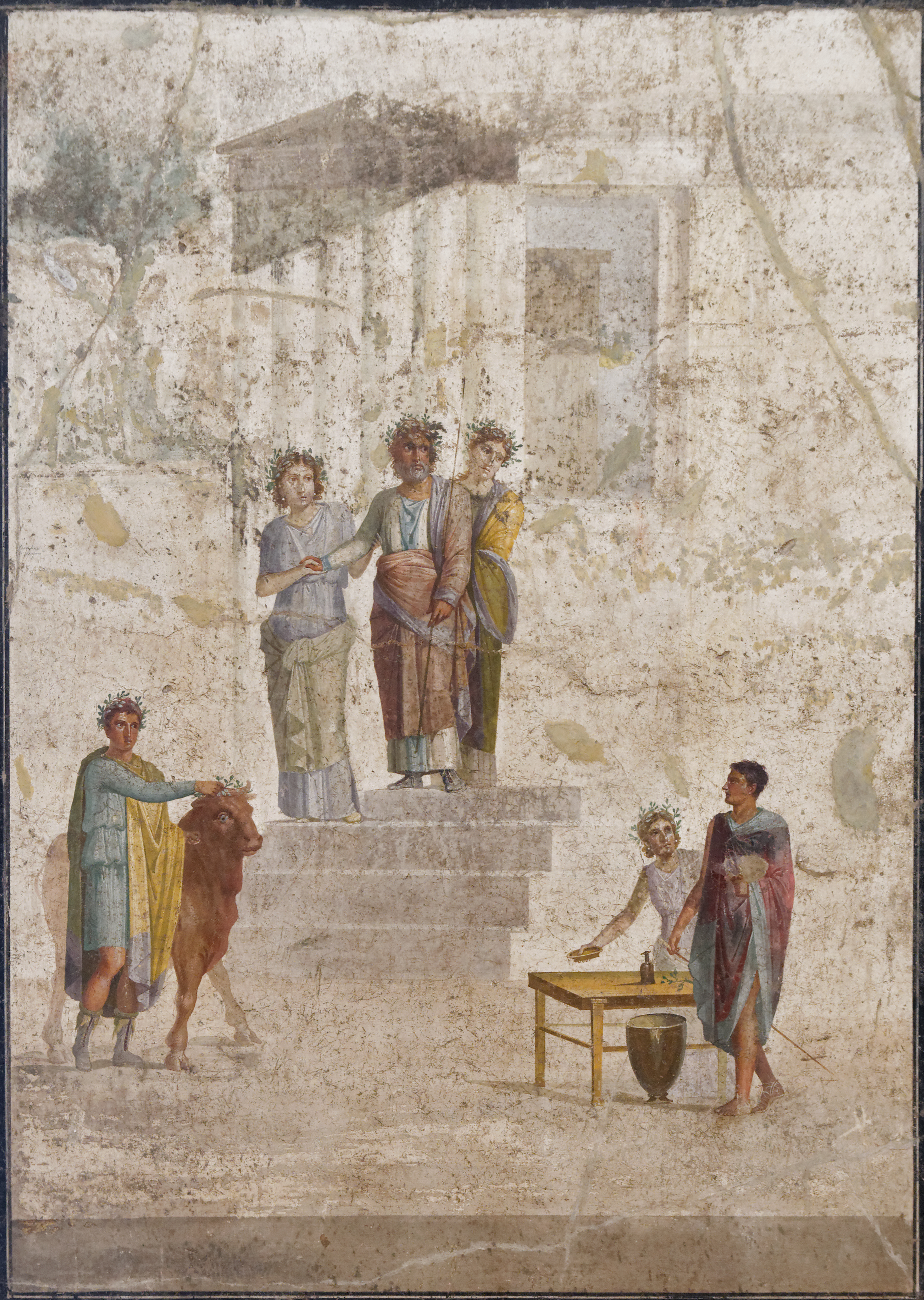|
Vela (constellation)
Vela is a constellation in the southern sky, which contains the Vela Supercluster. Its name is Latin for the sails of a ship, and it was originally part of a larger constellation, the ship ''Argo Navis'', which was later divided into three parts, the others being Carina and Puppis. With an apparent magnitude of 1.8, its brightest star is the hot blue multiple star Gamma Velorum, one component of which is the brightest Wolf-Rayet star in the sky. Delta and Kappa Velorum, together with Epsilon and Iota Carinae, form the asterism known as the False Cross. 1.95-magnitude Delta is actually a triple or quintuple star system. History Argo Navis was one of the 48 classical constellations listed by the 2nd-century astronomer Ptolemy, and represented the ship ''Argo'', used by Jason and the Argonauts on their quest for the Golden Fleece in Greek mythology. German cartographer Johann Bayer depicted the constellation on his '' Uranometria'' of 1603, and gave the stars Bayer designa ... [...More Info...] [...Related Items...] OR: [Wikipedia] [Google] [Baidu] |
Sail
A sail is a tensile structure—which is made from fabric or other membrane materials—that uses wind power to propel sailing craft, including sailing ships, sailboats, windsurfers, ice boats, and even sail-powered land vehicles. Sails may be made from a combination of woven materials—including canvas or polyester cloth, laminated membranes or bonded filaments—usually in a three- or four-sided shape. A sail provides propulsive force via a combination of lift and drag, depending on its angle of attack—its angle with respect to the apparent wind. Apparent wind is the air velocity experienced on the moving craft and is the combined effect of the true wind velocity with the velocity of the sailing craft. Angle of attack is often constrained by the sailing craft's orientation to the wind or point of sail. On points of sail where it is possible to align the leading edge of the sail with the apparent wind, the sail may act as an airfoil, generating propulsive force as ai ... [...More Info...] [...Related Items...] OR: [Wikipedia] [Google] [Baidu] |
Golden Fleece
In Greek mythology, the Golden Fleece ( el, Χρυσόμαλλον δέρας, ''Chrysómallon déras'') is the fleece of the golden-woolled,, ''Khrusómallos''. winged ram, Chrysomallos, that rescued Phrixus and brought him to Colchis, where Phrixus then sacrificed it to Zeus. Phrixus gave the fleece to King Aeëtes who kept it in a sacred grove, whence Jason and the Argonauts stole it with the help of Medea, Aeëtes' daughter. The fleece is a symbol of authority and kingship. In the historical account, the hero Jason and his crew of Argonauts set out on a quest for the fleece by order of King Pelias in order to place Jason rightfully on the throne of Iolcus in Thessaly. Through the help of Medea, they acquire the Golden Fleece. The story is of great antiquity and was current in the time of Homer (eighth century BC). It survives in various forms, among which the details vary. Nowadays, the heraldic variations of the Golden Fleece are featured frequently in Georgi ... [...More Info...] [...Related Items...] OR: [Wikipedia] [Google] [Baidu] |
Argonauts
The Argonauts (; Ancient Greek: ) were a band of heroes in Greek mythology, who in the years before the Trojan War (around 1300 BC) accompanied Jason to Colchis in his quest to find the Golden Fleece. Their name comes from their ship, '' Argo'', named after its builder, Argus. They were sometimes called Minyans, after a prehistoric tribe in the area. Mythology The Golden Fleece After the death of King Cretheus, the Aeolian Pelias usurped the throne from his half-brother Aeson and became king of Iolcus in Thessaly (near the modern city of Volos). Because of this unlawful act, an oracle warned him that a descendant of Aeolus would seek revenge. Pelias put to death every prominent descendant of Aeolus he could, but spared Aeson because of the pleas of their mother Tyro. Instead, Pelias kept Aeson prisoner and forced him to renounce his inheritance. Aeson married Alcimede, who bore him a son named Jason. Pelias intended to kill the baby at once, but Alcimede summoned ... [...More Info...] [...Related Items...] OR: [Wikipedia] [Google] [Baidu] |
Jason
Jason ( ; ) was an ancient Greece, ancient Greek Greek mythology, mythological hero and leader of the Argonauts, whose quest for the Golden Fleece featured in Greek literature. He was the son of Aeson, the rightful king of Iolcos. He was married to the sorceress Medea. He was also the great-grandson of the messenger god Hermes, through his mother's side. Jason appeared in various literary works in the classical world of Ancient Greece, Greece and Ancient Rome, Rome, including the epic poem ''Argonautica'' and the tragedy ''Medea (play), Medea''. In the modern world, Jason has emerged as a character in various adaptations of his myths, such as the 1963 film ''Jason and the Argonauts (1963 film), Jason and the Argonauts'' and the 2000 TV miniseries of the Jason and the Argonauts (TV miniseries), same name. Persecution by Pelias Pelias (Aeson's half-brother) was power-hungry and sought to gain dominion over all of Ancient Thessaly, Thessaly. Pelias was the progeny of a union ... [...More Info...] [...Related Items...] OR: [Wikipedia] [Google] [Baidu] |
Argo
In Greek mythology the ''Argo'' (; in Greek: ) was a ship built with the help of the gods that Jason and the Argonauts sailed from Iolcos to Colchis to retrieve the Golden Fleece. The ship has gone on to be used as a motif in a variety of sources beyond the original legend from books, films and more. Name Most accounts name the ship after her builder, Argus. Cicero suggested that it was named after the " Argives", a term commonly used by Homer for the Greek people of Argos. Diodorus Siculus reported that some thought the name was derived from an ancient Greek word for 'swift', which could have indicated that the ship was designed to move quickly. The adjective, occasionally found, is ''Argoan'' , from Greek ''Ἀργῶος'' through Latin ''Argōus''. Legend Construction of the ''Argo'' The ''Argo'' was constructed by the shipwright Argus, and its crew were specially protected by the goddess Hera. The best source for the myth is the ''Argonautica'' by Apollonius Rh ... [...More Info...] [...Related Items...] OR: [Wikipedia] [Google] [Baidu] |
Ptolemy
Claudius Ptolemy (; grc-gre, Πτολεμαῖος, ; la, Claudius Ptolemaeus; AD) was a mathematician, astronomer, astrologer, geographer, and music theorist, who wrote about a dozen scientific treatises, three of which were of importance to later Byzantine, Islamic, and Western European science. The first is the astronomical treatise now known as the ''Almagest'', although it was originally entitled the ''Mathēmatikē Syntaxis'' or ''Mathematical Treatise'', and later known as ''The Greatest Treatise''. The second is the ''Geography'', which is a thorough discussion on maps and the geographic knowledge of the Greco-Roman world. The third is the astrological treatise in which he attempted to adapt horoscopic astrology to the Aristotelian natural philosophy of his day. This is sometimes known as the ''Apotelesmatika'' (lit. "On the Effects") but more commonly known as the '' Tetrábiblos'', from the Koine Greek meaning "Four Books", or by its Latin equivalent ''Qua ... [...More Info...] [...Related Items...] OR: [Wikipedia] [Google] [Baidu] |
False Cross
An asterism is an observed pattern or group of stars in the sky. Asterisms can be any identified pattern or group of stars, and therefore are a more general concept than the formally defined 88 constellations. Constellations are based on asterisms, but unlike asterisms, constellations outline and today completely divide the sky and all its celestial objects into regions around their central asterisms. For example, the asterism known as the Big Dipper comprises the seven brightest stars in the constellation Ursa Major. Another is the asterism of the Southern Cross, within the constellation of Crux. Asterisms range from simple shapes of just a few stars to more complex collections of many stars covering large portions of the sky. The stars themselves may be bright naked-eye objects or fainter, even telescopic, but they are generally all of a similar brightness to each other. The larger brighter asterisms are useful for people who are familiarizing themselves with the night sky. Th ... [...More Info...] [...Related Items...] OR: [Wikipedia] [Google] [Baidu] |
Asterism (astronomy)
An asterism is an observed pattern or group of stars in the sky. Asterisms can be any identified pattern or group of stars, and therefore are a more general concept than the formally defined 88 constellations. Constellations are based on asterisms, but unlike asterisms, constellations outline and today completely divide the sky and all its celestial objects into regions around their central asterisms. For example, the asterism known as the Big Dipper comprises the seven brightest stars in the constellation Ursa Major. Another is the asterism of the Southern Cross, within the constellation of Crux. Asterisms range from simple shapes of just a few stars to more complex collections of many stars covering large portions of the sky. The stars themselves may be bright naked-eye objects or fainter, even telescopic, but they are generally all of a similar brightness to each other. The larger brighter asterisms are useful for people who are familiarizing themselves with the night sky. ... [...More Info...] [...Related Items...] OR: [Wikipedia] [Google] [Baidu] |
Iota Carinae
Iota Carinae (ι Carinae, abbreviated Iota Car, ι Car), officially named Aspidiske , is a star in the southern constellation of Carina. With an apparent visual magnitude of 2.2, it is one of the brighter stars in the night sky. Appearance and location The star and rest of southern Carina never sets on places from about 34° S southwards including Cape Town; its northernmost viewpoints are unobstructed southern horizons near to the 30th parallel north, once a day. The False Cross is an asterism formed from Iota Carinae, Delta Velorum, Kappa Velorum and Epsilon Carinae. It is so called because it is sometimes mistaken for the Southern Cross, causing errors in astronavigation. The star appears 46.0' (0.7668°) WSW of lowercase a Carinae, a mid-third-magnitude star, also forming part of the asterism and leading to its long, narrow projection which culminates in Canopus. Nomenclature ''ι Carinae'' ( Latinised to ''Iota Carinae'') is the star's Bayer designation. ... [...More Info...] [...Related Items...] OR: [Wikipedia] [Google] [Baidu] |
Epsilon Carinae
Epsilon Carinae (ε Carinae, abbreviated Epsilon Car, ε Car), officially named Avior , is a binary star in the southern constellation of Carina. At apparent magnitude +1.86 it is one of the brightest stars in the night sky, but is not visible from most of the northern hemisphere. The False Cross is an asterism formed of Delta Velorum, Kappa Velorum, Iota Carinae and ε Carinae. It is so called because it is sometimes mistaken for the Southern Cross, causing errors in astronavigation. Epsilon Carinae is located roughly from the Sun. Measurements during the Hipparcos mission give the pair an angular separation of 0.46 arcseconds with a difference in magnitude of 2.0. At their estimated distance, this angle is equivalent to a physical separation of around 4 astronomical units. The primary component has an apparent visual magnitude of 2.2, which by itself would still make it the third-brightest star in the constellation. It is an evolved giant star with a ... [...More Info...] [...Related Items...] OR: [Wikipedia] [Google] [Baidu] |
Kappa Velorum
Kappa Velorum (κ Velorum, abbreviated Kappa Vel, κ Vel; proper name Markeb ) is a binary star system in the southern constellation of Vela. The two components are designated Kappa Velorum A and B. From parallax measurements, this system is located at a distance of roughly from the Sun. The apparent visual magnitude is 2.48, making it readily visible to the naked eye in the southern hemisphere. It forms part of an asterism known as the False Cross along with Delta Velorum, Iota Carinae and Epsilon Carinae, so called because it is sometimes mistaken for the Southern Cross, causing errors in astronavigation. Nomenclature ''κ Velorum'' ( Latinised to ''Kappa Velorum'') is the system's Bayer designation. The designations of the two components as ''Kappa Velorum A'' and ''B'' derives from the convention used by the Washington Multiplicity Catalog (WMC) for multiple star systems, and adopted by the International Astronomical Union (IAU). The system had a traditional name ... [...More Info...] [...Related Items...] OR: [Wikipedia] [Google] [Baidu] |









